Claims figures for e-scooter collisions are trickling in, but the grey area surrounding the categorisation of this vehicle could open the gates to potential fraud
The introduction of electric scooters (e-scooters) on UK roads has created a “grey area” for motor claims and potential fraud because only rented e-scooters that are involved in the government’s trials are insured for use on public roads - unlike privately purchased e-scooters.
Plus, as a newer type of micromobility, e-scooters also fall outside the scope of the Official Injury Claim (OIC) portal, which launched in May this year to enable litigants in person to progress their own whiplash injury claims online.
This oversight could prove problematic as e-scooter accidents are increasing - in July 2021, for example, insurer Admiral noted that its policyholders had reported 52 accidents involving an e-scooter. The firm’s deputy head of motor claims Adam Gavin said this was a “big difference” compared to the start of 2020, when 13 e-scooter accidents were recorded between January and June 2020.
The fact that these types of claims are not included within the OIC portal could make them a target for fraudsters, especially those looking to receive compensation awards beyond the layers detailed in the portal’s corresponding tariff table.
Stuart Hanley, Minster Law’s head of legal practice, told Insurance Times: “It’s a grey area as to whether someone that is involved in an e-scooter accident will be able to access the OIC portal as it was designed for those involved in road traffic accidents. It does exclude specific road users, generally called vulnerable road users (VRU).”
This includes, for example, anyone using a motorcycle or bicycle, wheelchair users, horse riders and pedestrians.
“Anyone that is in that category when the accident happens is excluded from the OIC portal,” Hanley explained. ”E-scooters aren’t specifically mentioned - the nearest mention is ‘mobility scooters’ or ‘powered wheelchairs’.
”Technically, there’s an argument that an e-scooter is a motor vehicle for the purpose of the Road Traffic Act (RTA) - at the minute, [e-scooters are] illegal on public roads as [they] cannot meet the requirements for road tax, safety standards, etc. The only way you can ride an e-scooter on a public road is if it is in the government pilot scheme.”
Hanley believes compulsory insurance should be introduced for all e-scooters, that these vehicles should be brought within the definition of a VRU and that there should be a tougher crackdown on illegally used e-scooters.
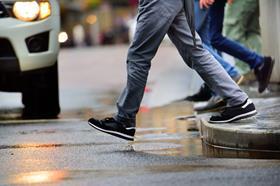
Alistair Kinley, director of policy and government affairs at BLM, added: “E-scooters simply weren’t part of the mix of road users when the rules of the OIC service and the Small Claims Protocol (SCP) were being developed.
“For this reason, they aren’t among the defined categories of VRUs whose claims, for policy reasons, are excluded from the SCP and OIC [portal]. As a consequence, claims by injured riders should be notified via the SCP, subject to being below the small claims valuation thresholds.”
Low value motor claims
Glyn Thompson, head of the Forum of Insurance Lawyers’ (Foil) motor focus team and technical lead for motor at law firm Weightmans, explained that when the government was initially devising the whiplash reforms - formally known as the Civil Liability Act - it saw the potential to recover costs when pursuing low value motor injury claims as “a factor likely to encourage fraud”.
He continued: “By making claims by the greatest proportion of road traffic accident victims – [this] being adult vehicle occupants – ‘non-costs recovering’, but also with predominantly tariff-based damages, the government aimed to persuade fraudsters that this arena offered little opportunity to prosper.
“With e-scooter user claimants falling outside the ambit of the OIC portal – and claiming non-tariff damages – costs remain recoverable.”
Research from retailer Halfords, which polled around 2,000 adults in November 2019 and February 2021, found that 16% of respondents claim to own an electric scooter. Furthermore, its own sales of e-mobility products has grown 184% year-on-year as at November 2020.
This trajectory and appetite for e-scooters suggests that the overall pool of potential claimants entitled to recoverable claims costs is set to increase - meaning the attraction for fraudsters might persist.
Kinley added that e-scooter riders falling outside the scope of the OIC portal “feels like an anomaly given that scooter riders are clearly vulnerable in the lay sense of the word”.
He continued: “On that basis, it seems realistic to envisage that the SCP and OIC [portal] rules might be amended to treat them in the same way as other VRUs whose claims are processed via the Ministry of Justice (MoJ) portal.”
Catherine Burt, national head of counter fraud at DAC Beachcroft, noted: “Low value e-scooter claims arising from e-scooter use on a government-approved scheme currently falls within the OIC portal.
“It is not clear, however, if that will remain the case once the trials conclude. Claims which fall outside the portal are likely to be more attractive to fraudsters.
“Evidence from other countries, including the USA, suggests that claims from such e-scooters are on the increase.”
Increasing accidents
In November 2021, Greater Manchester Police reported it had seized 150 e-scooters over the last 12 months for being ridden illegally or being involved in an accident. This data also recorded nine associated deaths in the first 10 months of 2021.
Meanwhile, statistics published last year by the Department of Transport (DfT) showed 460 accidents involving e-scooters and one fatality.
These numbers concur with Admiral’s figures too, noted Adam Gavin, the insurer’s deputy head of motor claims. “Our data shows there is a definite trend in the number of accidents involving [car] drivers and e-scooter riders and we believe the number will continue to rise,” he said.
However, the e-scooters being used in the government’s trial have a speed cut facility, said Stuart Hanley, Minster Law’s head of legal practice. This means they can automatically come to safe stop in a ”no go” area, reducing their speed to eight miles per hour.
Category confusion
In Ireland, a bill was put forward in October 2021 to describe e-scooters as “powered personal transporters”.
The bill includes strengthened laws to deal with the dangerous and anti-social off-road use of scrambler motorcycles, quad bikes and other similar vehicles.
In the UK, “e-scooters are classed as powered transporters and fall within the legal definition of a motor vehicle under the Road Traffic Act 1998”, explained Faye Fishlock, Carpenters Group’s head of defendant insurance services.

She continued: ”This means the same rules that apply to motor vehicles apply to e-scooters. This includes, but isn’t limited to, driving with a licence, driving or riding with insurance and driving or riding [somewhere] other than on a road.
”It is not currently possible to get appropriate insurance for privately owned e-scooters, meaning it is illegal to use them on the road or public spaces.”
Thompson added: “Given that the new [OIC] process encourages commercially appropriate but tolerably low levels of scrutiny, [this] could well encourage fraudulent claims in the hope of a commercial offer.
”If e-scooter claims proceeding outside the OIC [portal] offers the risk of increased fraud, the greater scrutiny of claims in that costs-bearing environment offers the first and best line of defence.”
Fishlock added: “It is advisable that any claim where the claimant is an e-scooter user is directed to the MoJ portal, as opposed to the OIC portal. These claims will therefore attract costs under the MoJ portal.
“Equally, injuries to pedestrians from private e-scooter use on the pavements or roads could lead to a claim against the Motor Insurers’ Bureau (MIB), as the injuries are sustained from the use of a vehicle - the e-scooter - but as it will be uninsured, the only potential compensator is the MIB.”
The MIB said it currently provides compensation to victims of uninsured e-scooters.
BP Insurance Brokers provides e-scooter riders with cover under its contents and liability insurance, as long as the vehicle is used in line with the law. Insurtech Zego is involved with insuring the UK government’s scheme.
ABI calls on government for more robust rules regarding e-scooters

The ABI has called on the UK government to create robust regulations regarding e-scooters being driven on public roads.
Currently, it is not illegal to own, buy or sell an e-scooter and they can be used on private land.
However, it is still illegal to ride them on public roads, pavements and cycle lanes unless they are included in one of the government’s ongoing trials.
Laura Hughes, the ABI’s manager for general insurance policy, said: “We share the government’s vision of a greener and more inclusive transport system. But at present, used illegally on roads and pavements, e-scooters are dangerous to their owners, other road users and pedestrians.”
The ABI has also warned consumers to think twice before giving an e-scooter as a Christmas gift.
According to the ABI, e-scooter riders are at risk of the following:
- Facing or causing serious injury to themselves, other road users and pedestrians: Users are eight times more likely to suffer a head injury than a cyclist. Figures published by the DfT in September 2021 showed that in 2020, there were 484 casualties involving e-scooters, on average - amounting to more than one injury every day. Since 2018, there have been an estimated 29 deaths linked to their use. The current status of e-scooters means there are no regulatory standards to govern their construction to ensure safety.
- Penalties for their illegal use: Riders could face a £300 fine and six points on their driving licence if they use private e-scooters on public roads or pavements. This could impact the cost of future motor insurance. The e-scooter in question can also be confiscated by the police.
Hosted by comedian and actor Tom Allen, 34 Gold, 23 Silver and 22 Bronze awards were handed out across an amazing 34 categories recognising brilliance and innovation right across the breadth of UK general insurance.


























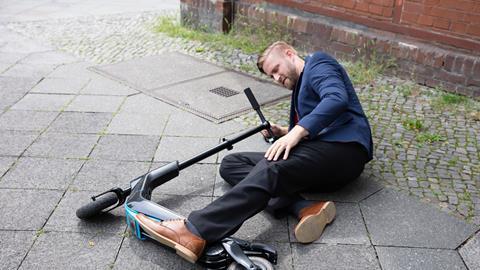











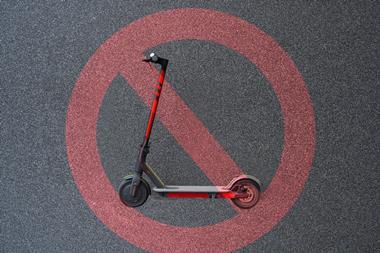

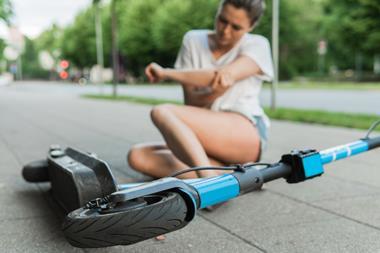
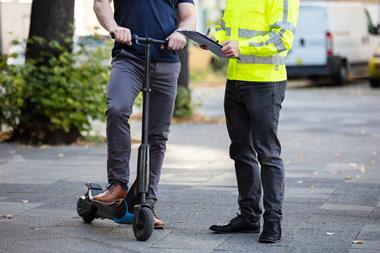









No comments yet